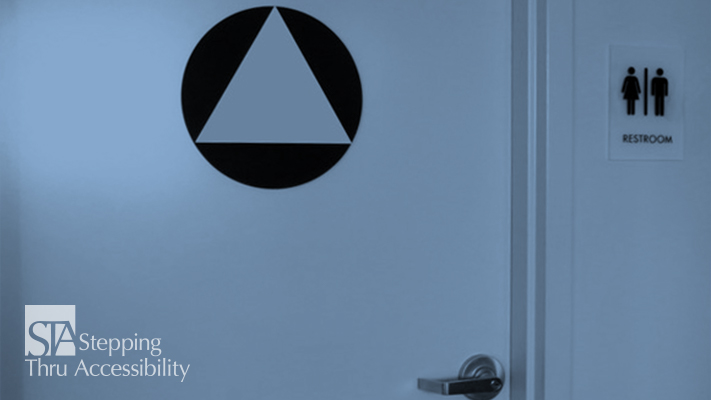Blog
Return to Blog »
Janis Kent, FAIA Architect, CASp © August, 2017, rev October 2018 Earlier in 2017, a law was passed in California stating that all single user toilet rooms are to be unisex — in other words we will no longer have a men’s restroom or a women’s restroom for one user. Since the rooms are required to have privacy locks they can now be used by either sex. What many business owners do not realize, that unlike the building code, this is retroactive for existing facilities. So as of March 1st of 2017, the signs are required to have been changed even if there were no alterations or construction. The California unisex gender symbol of a triangle on a circle is placed on the door. The triangle is to contrast with the circle and the circle with the door – either light-on-dark-on-light or dark-on-light-on-dark. While a permanent room sign stating Restroom in tactile characters is not actually required unless pictograms are also used, it is highly recommended to always provide as well, particularly since California gender symbols of circles and triangles are not universally recognized. If you are converting two gender-specific toilet rooms in the same area to two unisex toilet rooms, only one is now required to be accessible. This is due to the regulations stating that 50% with one minimum of clustered toilet rooms for each use is to be accessible. For existing facilities where there was not enough space to provide 2 accessible toilet rooms, this is the perfect time to alter one of the clustered rooms to be fully compliant taking space away from the other. If one is made fully accessible and the other not, be sure to place an ISA on the accessible toilet room, and locating it on the door gender symbol is a perfect place. Related Article: Sinks, Sinks, Sinks, and Lavs – What needs to be done? Some other items to note — if these were previously gender-specific restrooms, then a urinal might be located in one of the rooms. If altering the toilet rooms to provide one fully accessible, I would suggest locating the urinal in the accessible one if you are keeping the fixture. Also, if a baby changing station is located within the restrooms, then one should also be placed in the accessible toilet room as well. I do not know if having 50% of the single user toilet rooms accessible was the intention of the new law, but it is the requirements and perhaps the unintended consequences. Be aware that your local City or County may have additional requirements that are more restrictive than the State or Federal requirements. Also, this article is an interpretation and opinion of the writer. It is meant as a summary – current original regulations should always be reviewed when making any decisions. © Janis Kent, Architect, FAIA, CASp August, 2017 .Single User Toilet Rooms in California
